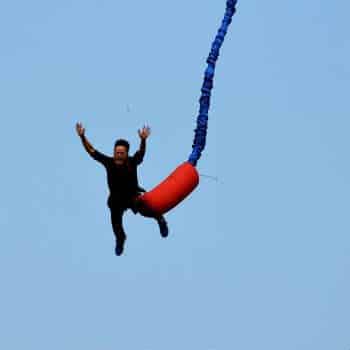Bungee jumping is certainly one of the best methods to satisfy someone who is looking for an adrenaline rush and is commonly done for the first time because of a spontaneous decision made by vacationers. The feeling of free falling hundreds of feet only to defy death due to a rubber rope that is attached to the body can be exhilarating.
The modern form of this activity was first executed in 1979 when three men jumped from the Clifton Suspension Bridge and although they were arrested, they continued to jump for years at other locations. This group had been inspired by the vine jumping ritual members of the Vanuatu participated in during their manhood ceremony. The word about this new activity quickly spread and soon companies began to offer jumps.
Today, while millions of successful jumps have taken place since 1979, not every jump is successfully and injuries and fatalities are common.
Other common types of vacation accidents are wakeboarding. How Can Victims Get Compensation After A Wakeboarding Accident? Find out here.
Due to the dangerous nature of the sport, companies that offer bungee jumping are required to meet certain safety standards. This may include:
These are just a few examples of a long list of rules and regulations that bungee jumping companies must follow. When the regulations aren’t followed or mistakes or made, people get hurt.
In most cases, participants are hurt because:
Whatever the cause, if a jumper becomes a victim, they may be eligible to file a bungee jumping lawsuit.
A lawsuit is filed either by the victim themselves or if they passed away due to their injuries, their surviving loved ones. The purpose is to obtain compensation that will cover medical expenses, lost wages, physical pain and suffering, emotional trauma, loss of consortium, loss of inheritance, and funeral and burial expenses.
An experienced vacation accident attorney can help determine who was at fault, file the necessary paperwork, collect evidence, and consult with professional experts, all of which is needed to prove that compensation is owed.
In many cases, there is more than one party that is responsible for the plaintiff’s accident. This may include the company that offers the jumps, the jump master, a company or contractor in charge of maintaining the jump site or anchors, or the manufacturer of the safety harness, cord, or other product which was used during the jump.
Whenever a company creates a product, they must test that product’s safety and provide instructions on how to properly use it. If there is a defect which causes the product to behave in a manner which it wasn’t designed to do and someone is injured as a result, the company can be held responsible under product liability laws.
For example, if the harness connecting the jumper to the cord has a defect which causes it to snap in mid air, that is a manufacturing defect.
Signing a waiver doesn’t mean that you don’t have a case. Even with a signed waiver, the defendants still have a responsibility to do everything within their power to make sure participants are safe. If they fail to do so, they can be held legally responsible.
All civil lawsuits have a statute of limitations, which means that the victims of a bungee jumping accident only have a short period to time to file their complaint. If this window closes, there may be no way to recover the compensation they need to heal and move on.
No. It doesn’t matter if you sustained broken bones, a head injury, spinal damage, internal damage, or an amputation – any injury is coverable.
Continue reading related articles: https://banvillelaw.com/vacation-travel-accident/go-karts/
